Overview/Brand Overview
For the past few years, it has seemed like Scarpa was getting their butts kicked in the mid-heavy weight touring boot game. With Technica absolutely dominating and the Dynafit Hoji/Radical and Atomic Hawx not far behind. Between the Maestrale RS, Maestrale XT, 4-Quattro SL, and 4-Quattro XT, a lack of options wasn’t the issue. I found myself asking, “Why bother with a Maestrale when a 4-Quattro weighs about the same and supposedly skis better?” Compounded with stories of durability issues with the Quattro and the Maestrale feeling a bit like old news (despite what looks like a good-great update), I can’t say I was inspired.
New for this winter was the 4-Quattro Pro model—a new tier of the Scarpa naming program that typically goes xxx LT, xxxx, xxxx RS, xxxx XT from lightest to beefiest. So, if we are following along, we have the heaviest, most downhill-oriented 4-Quattro line, with the Pro model slotting in above the previous big dog, the XT. One might ask, are we getting close to a 50/50 boot yet? It’s also worth mentioning here that the Quattro Pro has some lineage to the Freedom boots, a proper 50/50 model (proper in that, like many 50/50 boots, they were horrible to tour in but acceptable substitutes for an alpine boot) that Scarpa discontinued a few years back.
As discussed in the first look, a few things drew me to the Quattro Pro. First, I have been craving a truly excellent performance fit in a touring boot. With the general rhetoric of a super low volume fit in the other Quattro models, I was excited to start with something tight and work from there. Second, I was intrigued by the promise of great walking and relatively low resistance over the ROM. I have been enjoying heavier boots with a lower friction ROM over the past few years, and this seemed like a boot where I may find the limit. To make a long story short, I am getting what I was after in some ways, and in many ways, the Quattro Pro was less of a departure from my norms than I expected.
Design Highlights
At 1500 g or so in size 27, the Quattro Pro slots into an interesting space in the boot market. Marketing and my experience say it performs on par with 50/50 style boots like the Atomic Hawx XTD, Dynafit Tigard, and Tecnica Cochise. Weight and walking performance, though, would put it more in the realm of 4 buckle/beefy touring boots like the Dynafit Radical, Lange XT3 2.0, or even Technica Zero G Tour Pro (though the Zero G is about 150g lighter, the walking performance is comparable).
Delving into the details of the Quattro Pro, it is immediately apparent that a lot is going on: four buckles, a cabrio design with thick Pebax plastic throughout, topped off with an elastic power strap, and a burly Intuition liner. Relative to my usual 1000-1400g daily touring boots, the Quattro Pro felt like a different animal.
Starting at the top, the power strap is elastic and pretty stretchy; I don’t have a ton of experience with Booster straps, but I was surprised at how stretchy the power strap was. I think this is ultimately a positive for skiing performance and suspension, but it took me by surprise nonetheless. Moving down, we have what I understand is a beefed-up cuff with a locking (and also beefed-up) walk/ski lever. The cable-style buckles are Zero G-esque (read: not terribly easy to latch and likely a bit fragile over time), the upper buckles have a tour-mode catch that works well for opening the cuff up without floppy buckles. The combination of overlap and a tongue here makes all the plastic to be a bit softer and more pliable. Getting all the cuff-tongue-liner layers in order can be a slight project, but otherwise, the boot is very easy and comfortable to get on and off. None of the buckles are positioned great for helping with heel hold, but I never felt this was an issue given the narrow heel pocket.
The word on the street is that the lower shell is shared with the Maestrale RS, but the Quattro is one size smaller for a given mondo size (e.g. the 28.5 Quattro lower=27.5 Mastrale lower). The toe buckle on the Quattro feels more effective/useful than the toe buckle on the Zero G, which I often left unbuckled as I never felt like it helped secure my midfoot, the Quattro lower buckle has a bigger plate/attachment that pulls from the arch area and helps sug down the forefoot in a confidence-inspiring and precision-enhancing fashion.
Last but not least, the Quattro Pro is only available in a GripWalk sole. A nod to its 50/50 nature, it sure seems like a good enough touring boot to warrant an ISO 9523 sole option. Gripwalk is okay for a lot of ski touring, but it is somewhat sub-optimal for boot packing without crampons and/or rocky scrambling. The smooth toe just isn’t as secure as a more lugged touring sole toe. I’ve seen someone combine a Mastrale lower and Quattro Pro cuff to get what is theoretically an ISO 9523 sole Quattro, but the cost and pain in the butt of achieving that is a bit much.
Fit and Bootfitting
The Quattro line is well known at this point for providing a low-volume fit. I went into this review expecting to invest time and energy into boot work to get the fit dialed. Aside from a liner heat mold and dropping an insole into the liner, I didn’t need much for fit adjustments. I went out on a bit of a limb with ‘downsizing’ to the 27.5/28 shell size. Scarpa has their shell size break on the half size rather than full, so in most other boots (Tecnica, Head, Dynafit, La Sportiva, etc) I wear a 28/28.5 shell. In Scarpa boots previously, I’ve worn up to a 29.5/30 (in the Alien RS). The desired fit is certainly a factor here, I was after all day comfort in the Alien RS, and probably should have sized down to at least the 28.5/29 shell. All that is to say, I went with the smaller size here and am very pleased with the fit and length without any major boot work.
Starting at the toes, the toe box shape felt ergonomic and had no pressure points for my Egyptian feet (big toe longest). The toe box height was surprisingly roomy. I enjoy having some room for my toes to wiggle, but the toe buckle was only medium-effective at reducing this volume for a more precise feel when skiing. The forefoot width was also medium, it didn’t cause any issues for my large tailor’s bunion on my right foot and felt snug but comfortable on my otherwise narrow forefoot. I would slot this boot as a touch wider and higher volume in the forefoot than the Zero G Tour Pro, similar to the Dynafit Ridge, and narrower than the Backland XTD, or Zero G Peak. Instep height was reported to be low, but I found myself buckling the instep buckle as tight as possible and sometimes wanting more rungs to go tighter. It is definitely more accommodating than the Zero G Tour Pro or Ridge, and while it was capable of hugging my instep, it felt like I was on the low side of the workable range. Meanwhile, I am working on mods to make more room in the Ridge instep, for context.
The midfoot, heel, and ankle are where the Quattro’s low-volume reputation starts to show. It is always a mystery that companies continue to make boots with a low-volume forefoot and a wide/sloppy heel and ankle. The Quattro bucks this trend, thankfully. Combined with either the stock Intuition liner or especially the Zipfit GFT, I had truly excellent heel hold at all times with the Quattro. I experienced some pain at the end of some long days skiing inbounds in and behind my 5th metatarsal zone. I think that’s a result of a lot of time buckled tight, which speaks to the tongue’s effectiveness at licking my ankle area into the shell. In the Achilles area, I didn’t notice any aggressive shaping that could dig into the Achilles (a big issue for me in Alien 1.1). The cuff height is average, or even a little low, relative to the beef of the boot, but it isn’t noticeable compared to something like the Zero G.
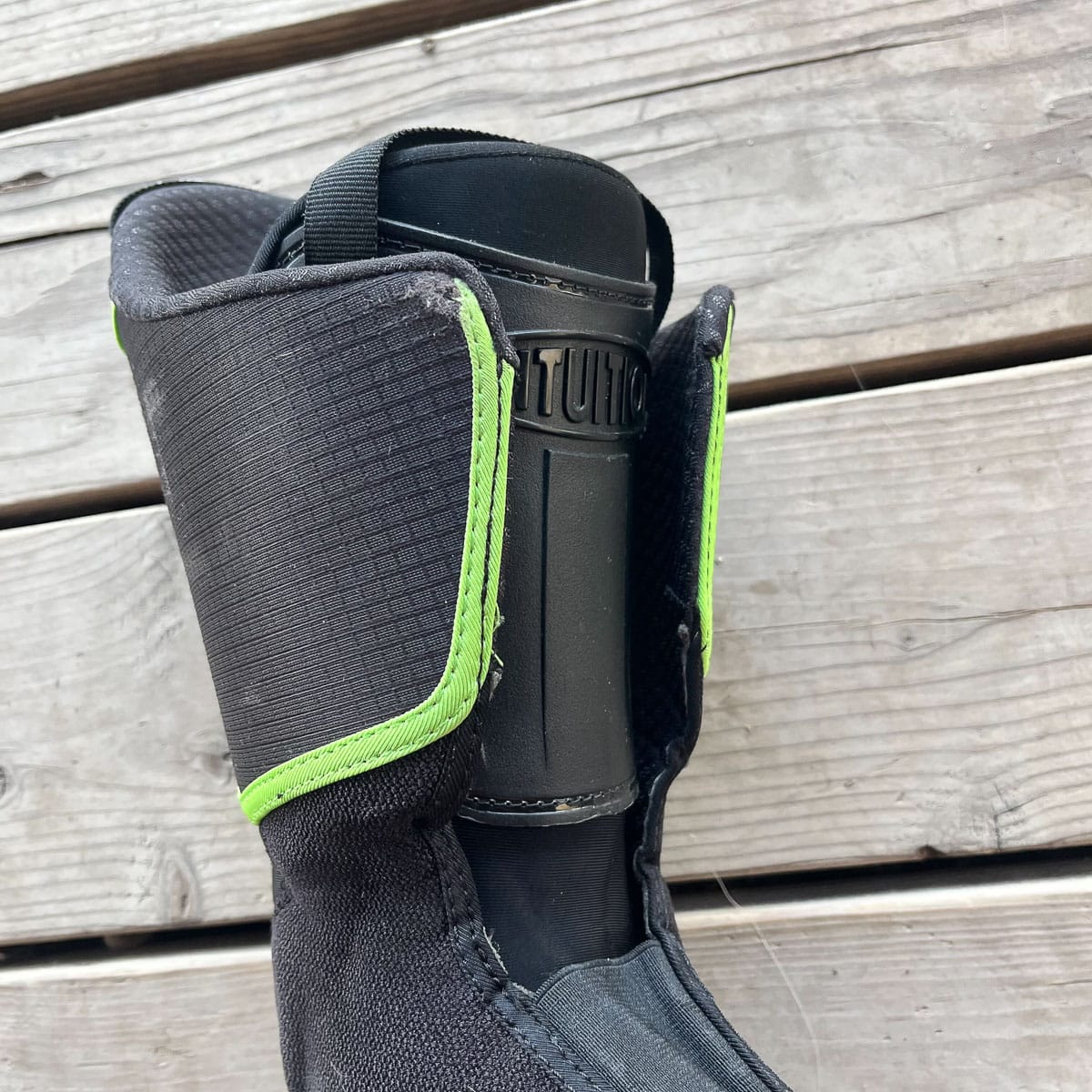
The tongue has a large plastic stiffener that should spread impacts and load nicely over the whole tongue.
The stock liner is an Intuition model, as we have come to expect from Scarpa. The liner is better than most and definitely workable. I struggled a little with the softer foam in the forefoot folding and creasing when inserting it into the shell—the foam here feels a bit less robust and stiff than a normal Intuition. The heel pocket and tongue are really nice, and the upper cuff has a good amount of stiff foam that feels supportive and takes up volume around the calf nicely. The tongue has a large plastic stiffener that should spread impacts and load nicely over the whole tongue. Overall, Scarpa continues to deliver what I see as the nicest stock liners out there. They are warm, relatively durable, and provide in the fit and performance realms.
For bootfitters, Pebax isn’t the easiest material to manipulate as it has a “memory” and often needs to be left in a press overnight to “set” the new shape. Aside from the nuances of the plastic, the Quattro is easy to open up and access (not as easy as a cabrio boot with a hinged tongue, but still pretty compliant) and has little in the way of reinforcement molding to get in the way of fitting work.
Field Testing
I jumped into the Quattro as my main boot for the first few months of ski season in 2024/2025 and skied it quite a bit with various skis. Part of my goal with the Quattro was finding a good match for more directional skis like the Dynastar M-Tour 108 that require a forward stance and more suspension/damping in the boots to maintain that forward stance throughout a ski run. On this front, the Quattro was excellent. Honestly, I haven’t loved many of the beefier boots I’ve owned/tested over the years. Sometimes I thought I wanted a stiff boot, but once I was using them, I didn’t feel like I skied much better than in my lighter boots—I was still getting knocked around from front seat to back and, generally, getting punished by the harsh stiffness. The Zero G Tour Pro and, more recently, Head Crux have given me this feeling. The Quattro, on the other hand, is the first beefy touring boot I’ve used that feels progressive in a more similar way to alpine boots I’ve tried. It is relatively soft for a few degrees of flexion before ramping up to a stiff and supportive “full flexion” state.
In practice, I described this performance as allowing for varying degrees of pressuring the front of your boots rather than the on/off, front or back feel of a more harsh boot. This meant I could absorb an impact, bump, or sloppy technical moment while staying forward and in control, making a micro recovery rather than a full-on backseat flail recovery. This performance was pretty awesome for me in a reasonable touring boot–the ski performance is truly a step above anything else I’ve used.
The above claim of “reasonable touring boot” needs some elaboration. Regular readers will know that I’m picky and sensitive regarding walk mode friction and performance. I can’t say that the Quattro Pro is the best walking boot out there, but for the weight and downhill performance, it is pretty darn good. The range of motion is enough to be workable and not feel restricted coming from lighter boots. The friction over the range of motion is better than other similarly beefy boots but somewhat limited by the tongue and beefy liner. Compared to the pre-2025 Zero G Tour Pro, the Quattro is quite a bit better in terms of forward range of motion and reducing friction. The new Zero G looks to have closed this gap somewhat, but I suspect the Quattro will continue to outperform. The Hoji Free seems to be analogous to the Quattro in the realm of walking performance. I don’t have enough time in that boot to pick a winner or loser, but I suspect they are more similar than different in walking and skiing performance.
Nikolia Schirmer’s feed is probably among the best places to hear about durability issues with the Quattro Pro. I haven’t had any issues thus far, and I have some faith that Scarpa has solved the significant durability issues that the first Quattro boots suffered from, including cracking cuffs and walk/ski mech failures. I would give these my reliability endorsement for normal ski touring and some resort use, but we’ll have to wait and see how things play out for the more extreme use cases and/or hard skiing.
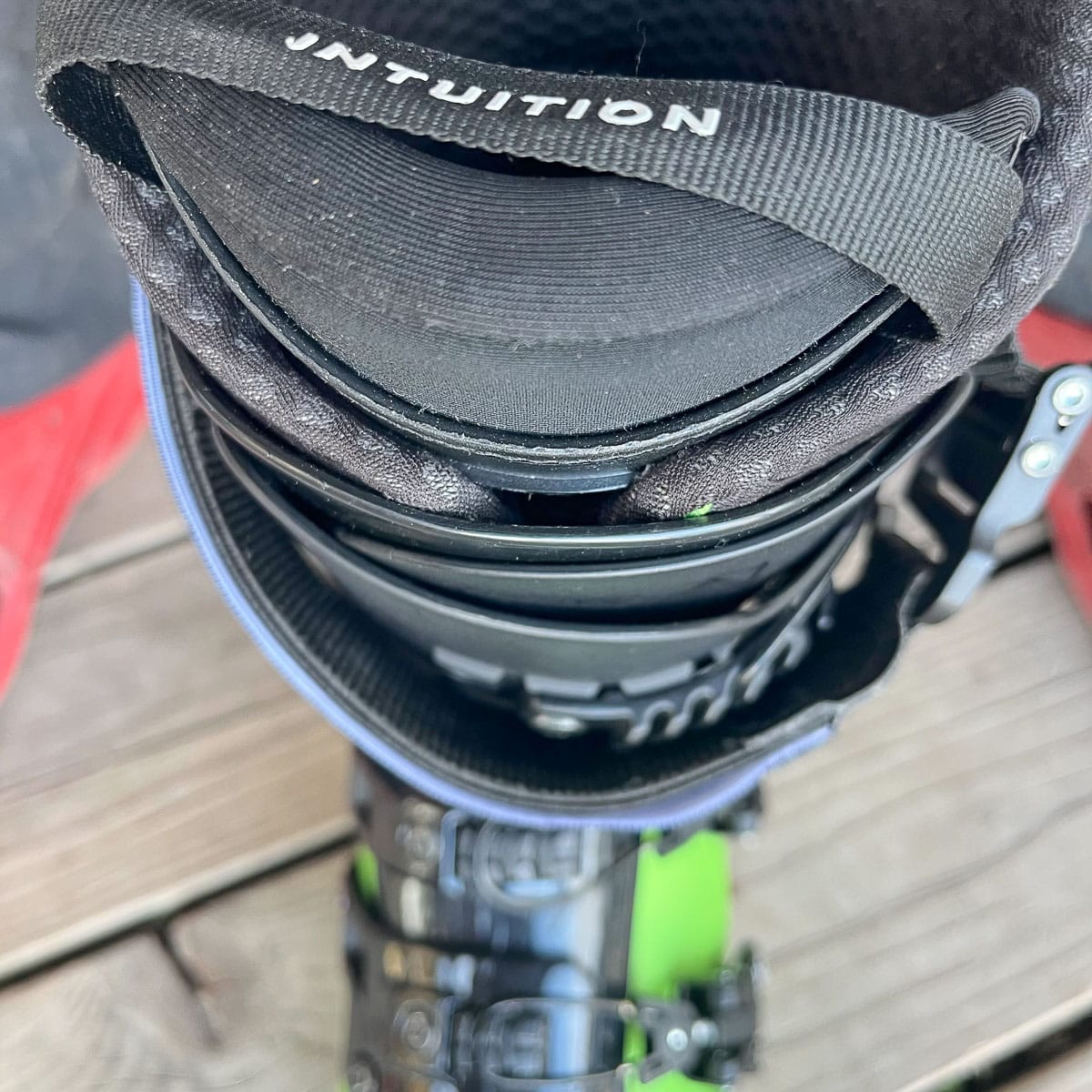
Layers upon layers and a hearty liner tongue makes for a stiff boot with excellent flex characteristics.
Conclusion
After some conversations with Jake Skeen about his Dynafit Ridge mods, I’ve been thinking a lot more about how a boot flexes rather than just a soft/stiff metric. The Quattro Pro takes the cake among all the touring boots I’ve tried for excellent flex characteristics. Similar to how I enjoyed skiing the Atomic Backland XTD, the Quattro takes that flex and suspension and adds in a better “ramp up” to the flex range, more damping and suspension both due to weight and the addition of a tongue, and a really nice lower volume fit with great heel hold.
I’ll be honest: I’m still not a heavy boot guy. I’ll likely be back skiing the Dynafit Ridge, Zero G Peak, and Stratos Hybrid for the rest of the spring. But I will keep the Quattro Pro around for slower guiding days, have fun skiing fast on Teton Pass, and pull double duty as a resort boot for my occasional lift-serviced forays. I would also likely bring the Quattro back to Japan or Chamonix if lift-accessed tours were the main objective.
I could see skiers who spend a lot of time in heavier resort boots and have historically toured in a 50/50 boot (think Cochise/Hawx XTD) having a good experience switching over to the Quattro Pro. The walking performance blows these other 50/50 boots out of the water, and the skiing leaves little to be desired. Similarly, folks skiing in the Zero G or similar mid-weight touring boots could enjoy the upgraded suspension and damping characteristics and enjoy similar walking performance with a moderate weight penalty.
On the whole, the Quattro Pro is an excellent platform with among the best ski performance available in touring boots and the best walk mode available for its weight. The fit and performance also make me a little curious about the updated Mastrale; in our opinion, Scarpa has done a great job at the heavy end of the spectrum with the Quattro and at the mid-light end with the F1 XT. It may be time to see if the Mastrale is a Goldilocks for us.
Specs
Total Weight: [28/28.5] 1718g (w/ insole)
Shell Weight: 1367g
Liner Weight: 293g (insole removed)
Sole Norm/Compatibility: GripWalk/tech
Materials: Pebax Rnew
Fitting Notes: Medium width and instep, narrow heel, and low-volume ankle
Price: $949.00

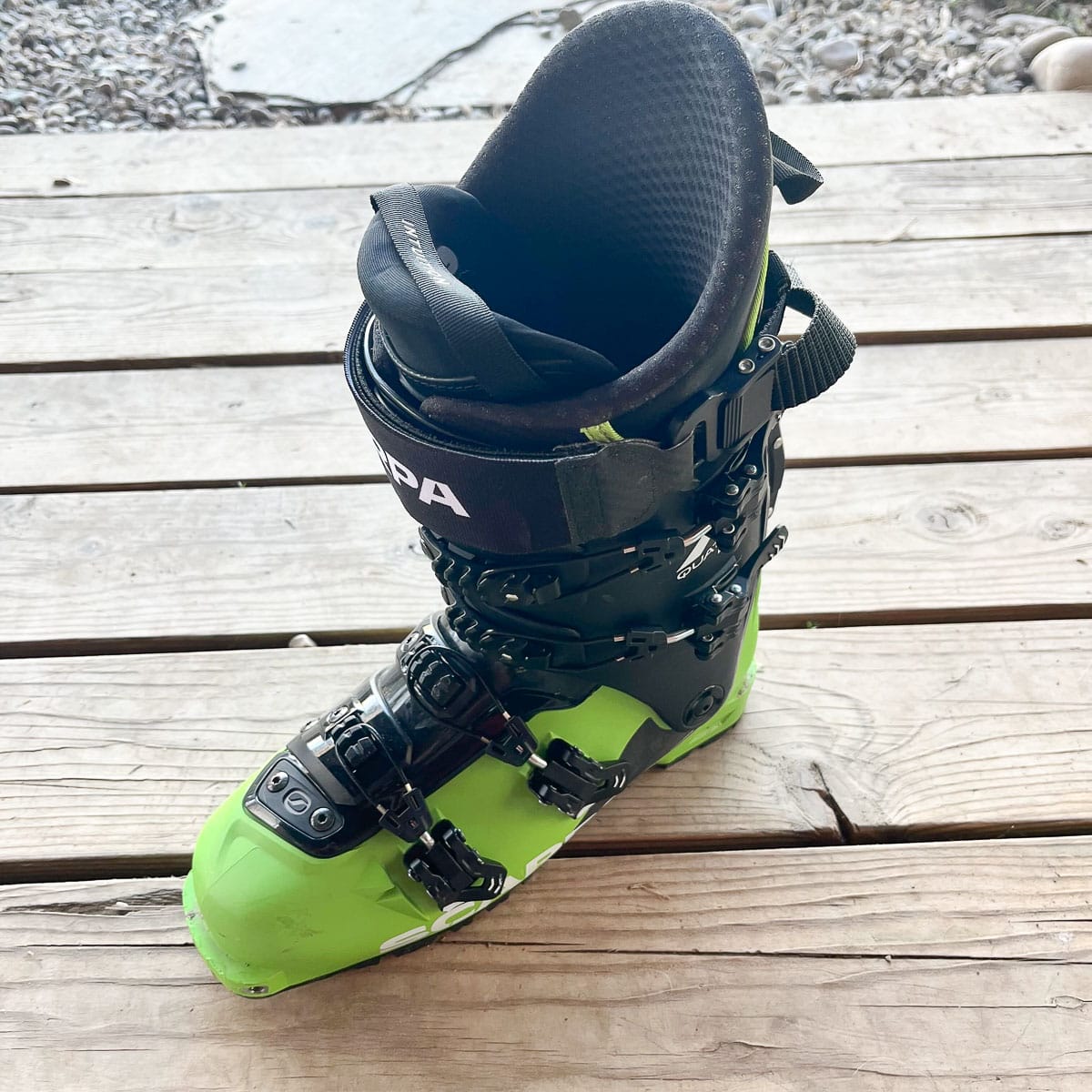
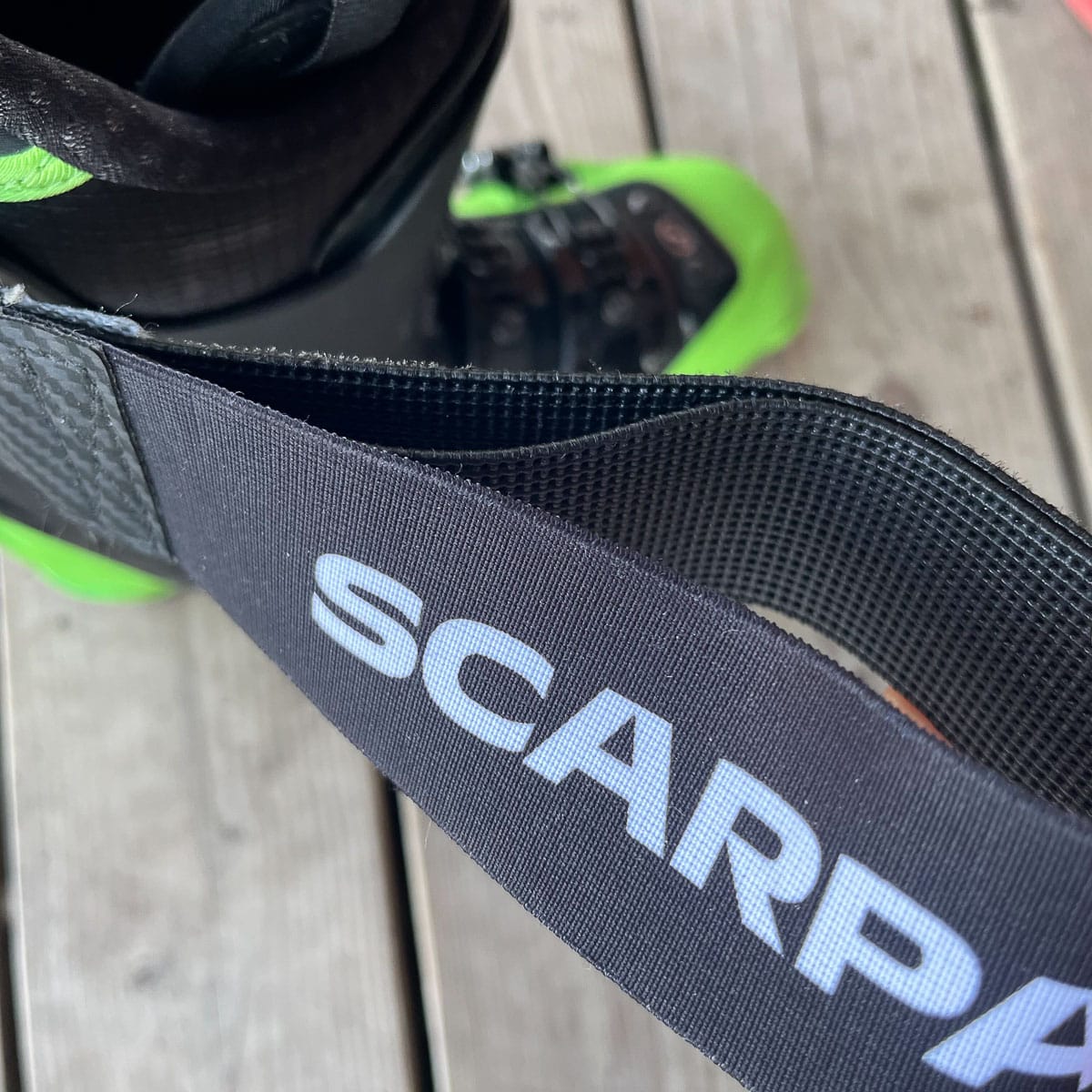

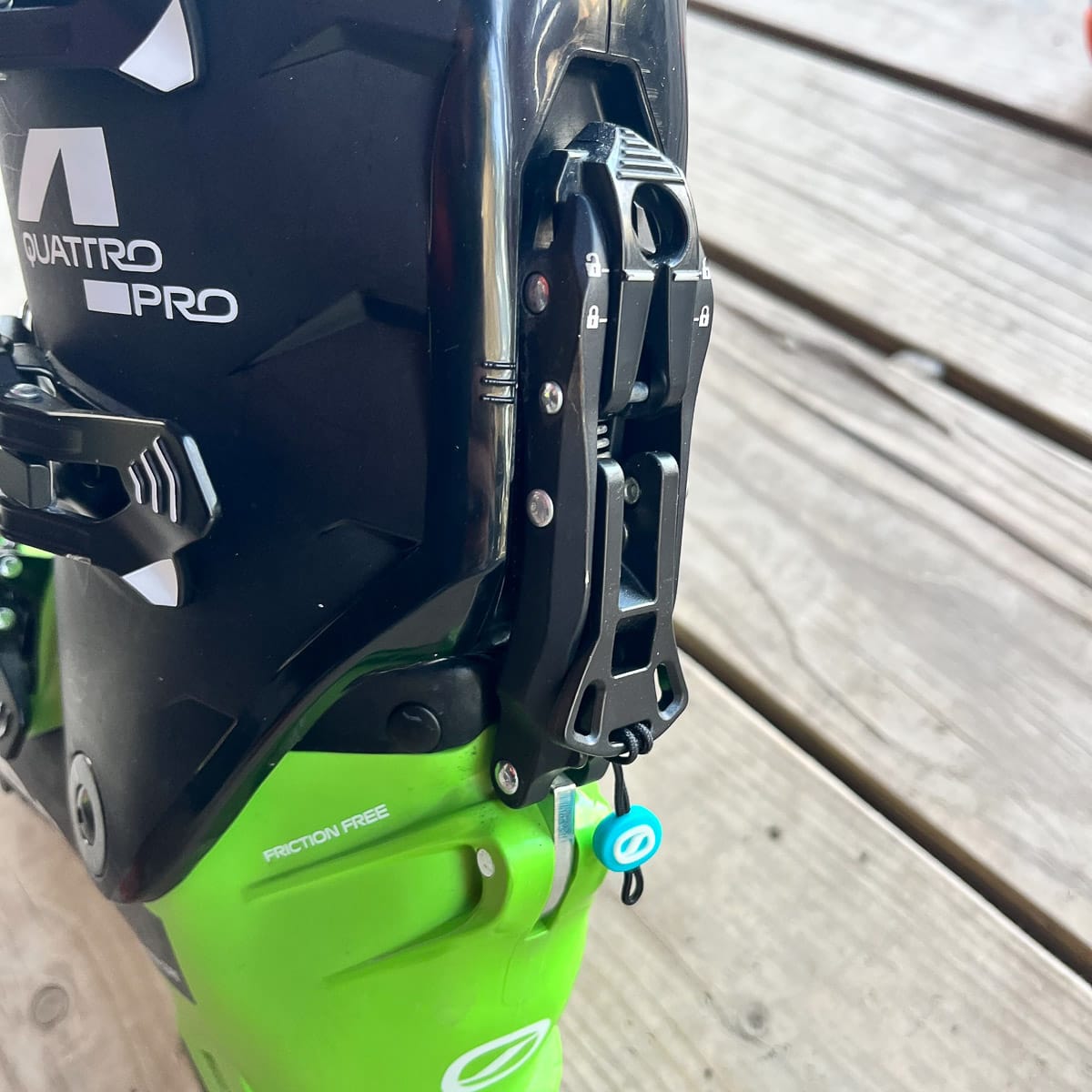

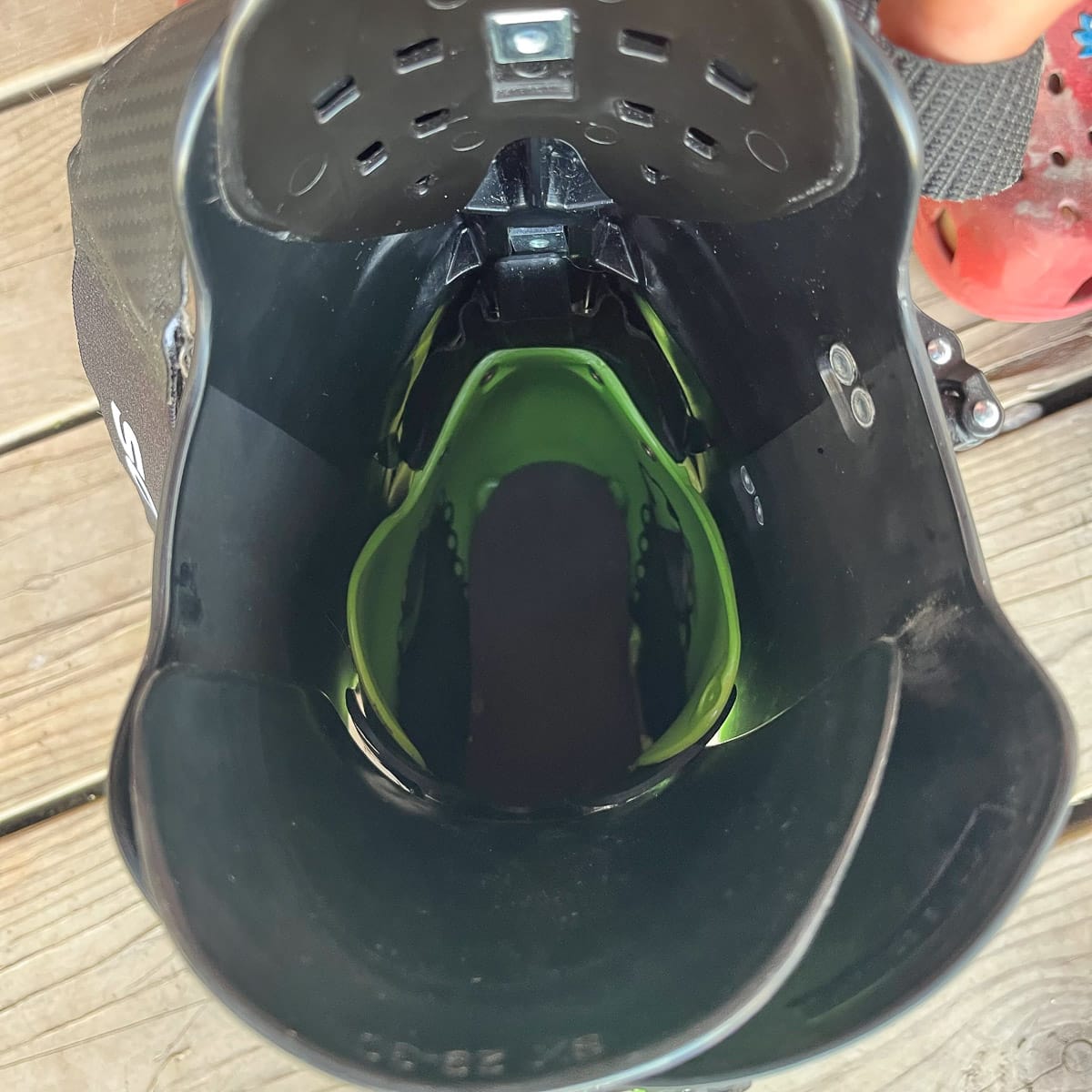
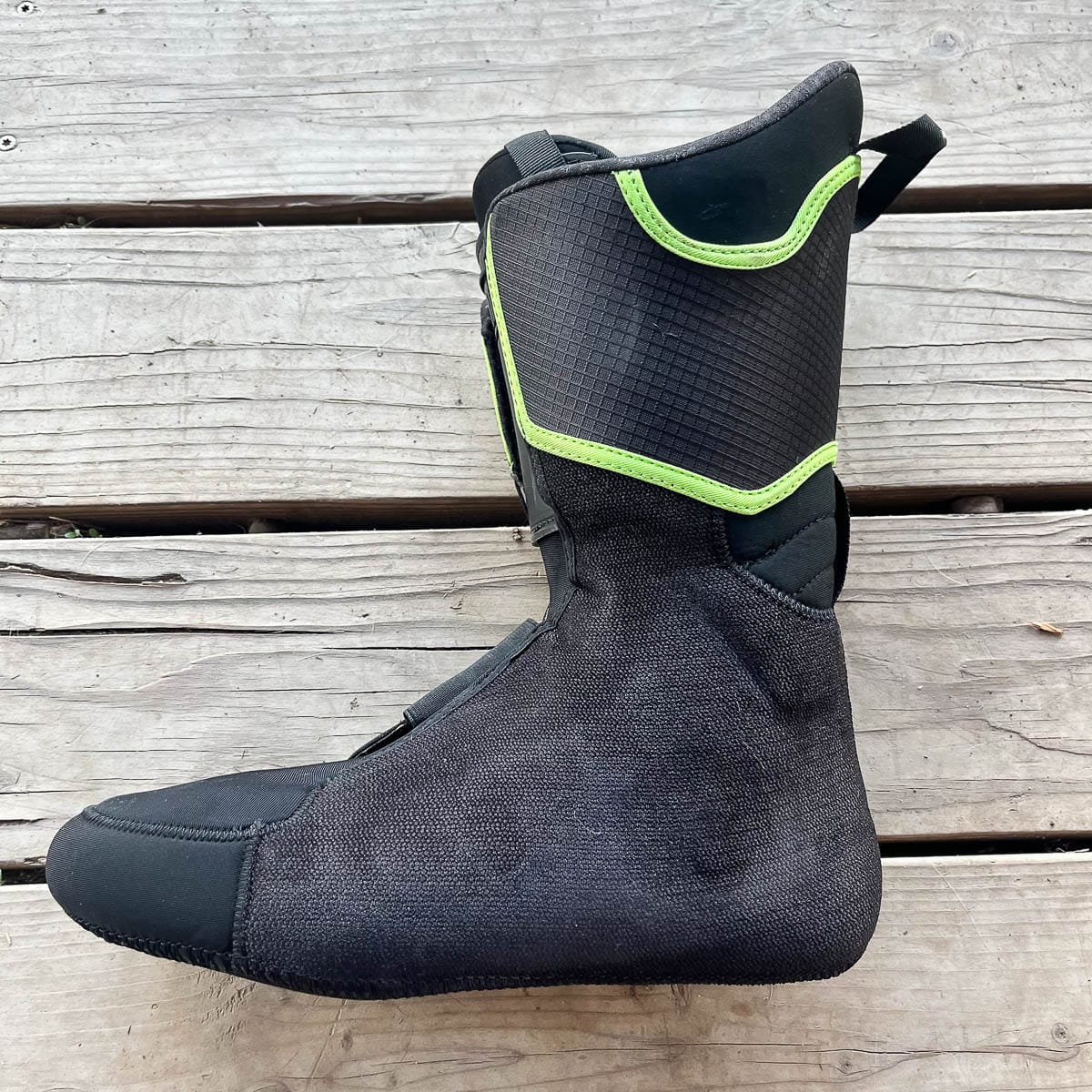
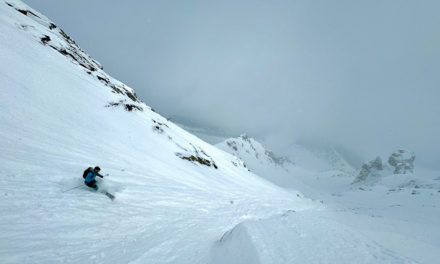
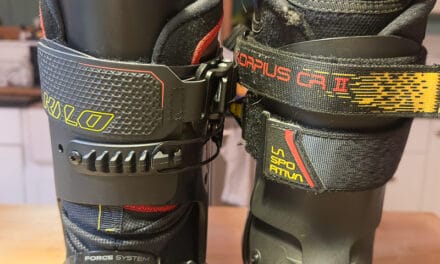
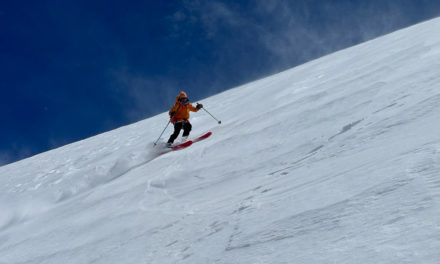

“The cuff height is average, or even a little low, relative to the beef of the boot, but it isn’t noticeable compared to something like the Zero G.”
So you are saying the zero G is noticeably what? High? low? Please clarify for those of us who haven’t skied the new iteration.
Hey Brett, sorry for the lack of clarity there. My intent was that the ZeroG is a relatively average cuff height for a baseline comparison. Let me know if more quantitative data is helpful in this instance, I’m always happy to break out the measuring tape.
Your description of the flex characteristics is what I’ve been searching for in boot reviews, thanks for that. Would love to hear more comparisons of this with the different touring boots (…maybe a future Podcast episode?!)
My pre-BOA 27.5 Hawx with Intuition liners are still 1700g and just don’t walk well enough, but their suspension and dampness make it possible to ski with arthritic knees. Is there a sub-1500g better walking boot with this type of suspension? I was hoping it’d be the Skorpius 2 but nope. Maybe the Ridge? Sounds like it’s the Quattro.
Nice review Gavin! Glad to hear you’ve found a beef boot to enjoy.
Question, these break on the full size, 24.5/25, 25.5/26, 26.5/27, 27.5/28 etc. Which length did you test and what shell size do you comparably use in other brands?
Just a couple of comments from experimenting with the Quattro Pro myself this season. I’ve skied almost every boot in this category as someone with problematic feet who is always looking to find something that is both walks well, is stiff and fits better.
– The bio pebax punches like pastry, you don’t even need the cup of the boot press, just heating the shell and pushing on the ball is enough to mold the boot in the shape you want. It’s kind of concerning how easy it is actually. If anyone is on a hut trip or traverse or something and in pain I’m confident you could punch this boot with a combination of a fire, a gloved hand and maybe a ski pole handle.
– Comparing the walk mode to the Hoji Free 130: The Quattro is a bit less frictionless through a larger ROM than the Hoji. The Hoji has a noticeable amount more of forward ROM, the Quattro has more rearward ROM with less friction. I think it depends on what someone values, I have flexible ankles so missing forward ROM really bothers me so I find the Hoji to walk much better.
– As someone who has a long history of skiing World Cup style inbounds boots, I do have to disagree with you on the flex profile. I find the Quattro flex to be much more on/off and have a higher rebound rate than many other beef boots or inbounds boots. I do think it still skis well and if this is going to be someones main boot I do think they’ll adapt to it no problem, but for example I find the Hoji Free has a significantly more progressive and stronger flex versus the Quattro.
– I do find the cuff low, especially with the carveouts on the sides of the cuff. When measuring it seems to be 1-2 cm lower than the Hoji or Zero G in my size.
– I found the stock intuition foam used in the liner too flimsy and put in a normal intuition quickly, significant improvement. The plastic on the tongue is like you mentioned nice however.
– This boot definitely could use the full vibram soles, the soles are allegedly replaceable with the right skillset so it would be cool if that is something someone could offer with soles from Scarpa.
– Another thing that lets this boot ski really well is the amount of forward lean it has, the zero G needs the Raide mod to feel similar and plenty of other boots in this category feel too upright in my opinion.
Hey MP, thanks for the detailed response and additional perspective! I always find it fascinating how different an experience can be with a boot given someone’s background what their baseline is – mine is certainly not a world cup race boot.
I added a blurb to the fit and bootfitting section in the review about shell size, not including that from the get go was an oversight on my part. In brief, I went for the 27.5/28 shell, with my norm being a 28/28.5 for almost all other brands. I was expecting to need some shell work/punches, but ended up very happy with the fit after a liner mold.
Its a shame that the Hoji Free is no longer available – now that I am skiing the Ridge, I am more intrigued than ever by the Hoji boots and it seems that is the only other model that would’ve worked well for me, volume wise.
Agree with you about forward lean – it is awesome to have such a wide adjustment range. The 19* lean + flat binding ramp made skiing a directional ski like the Dynastar Mtour 108 much more enjoyable for me.
Have you confirmed the lower shell is shared with the Maestrale just off one size? Would make sense given the BSL’s line up. I skied a 26.0 Maestrale RS (V4/2024) quite a bit but after fiddling with the high instep and some durability issues I swapped to new the Tecnica Zero G Tour Pro in a 26.5. The latter felt great but was a tad snug in the heel which presented it’s own set of difficulties.
That being said if I was to go back to Scarpa for the Quattro (undecided on Pro vs XT) would it be best to size up to a 26.5? Wondering if the 26.0 would be a tad too short and snug in the heel. I figured with the volume of the Quattro and the forefoot shaping of the Maestrale shell it would be a great pick.